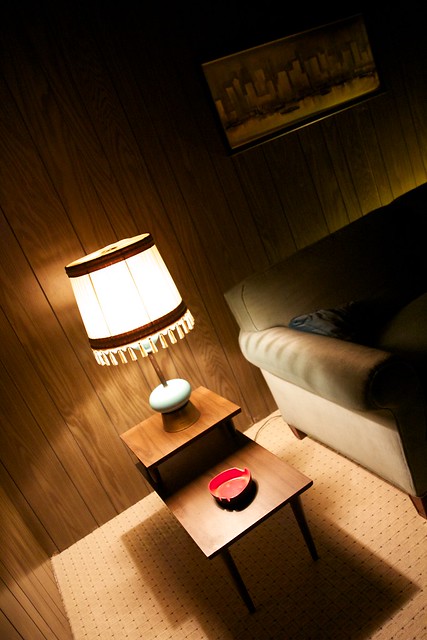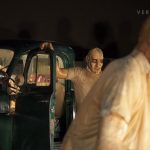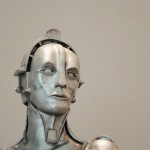The exhibition Kienholz. The Signs of the Times at Schirn Kunsthalle in Frankfurt am Main presents the provocative and polarizing work of Edward Kienholz and Nancy Reddin Kienholz. The show starts with early sculptures and installations by Edward Kienholz such as The Blue Wagon (1960), The Carnivore (1962), and The Nativity (1961), and culminates in Edward and Nancy Reddin Kienholz’s spectacular installation The Ozymandias Parade (1985). The Signs of the Times aims to highlighting the essence of Edward Kienholz and Nancy Reddin Kienholz’s oeuvre.
Edward Kienholz and Nancy Reddin Kienholz’s work caused a lot of opposition and uproar because of the unvarnished depiction and thematization of sexual power and exploitation, abuse of political power, racism, and institutionalized faith. The controversy around Edward Kienholz’s work Back Seat Dodge ’38, which was shown as part of a solo exhibition at the Los Angeles County Museum of Art (LACMA) in 1966 is one example of the violent reactions that Kienholz’s work caused. The Los Angeles County Board of Supervisors declared the work that shows two faceless figures having sex in a car “pornographic” and the exhibition was hotly discussed in local newspapers. Another major Kienholz work, Five Car Stud 1969-1972, Revisited is currently on view at the LACMA.
Edward Kienholz was born in Fairfield, Washington in 1927. He was a self-taught artist and acquired many impressions, insights, and manual skills that would later be decisive for his artistic work from working as a nurse’s aid, a used car salesman, a handyman, and a proprietor of a bar. In 1954, Edward Kienholz settled in Los Angeles, where he got in contact with the avant-garde art scene, and where he produced his first wooden reliefs and assemblages. He organized exhibitions and opened the NOW Gallery in 1956 and the Ferus Gallery in 1957. He started to create three-dimensional ‘tableaux’, large-scale installations for which he used found objects and everyday things such as TV sets, car parts, furniture, loudspeakers, and also plaster casts of various family members and friends.
Edward Kienholz and Nancy Reddin Kienholz’s work was shown in major art institutions around the world, such as LACMA, Los Angeles (1966); Moderna Museet, Stockholm (1970); Kunsthaus Zürich (1971), Centre Pompidou, Paris (1977); Kunsthalle Düsseldorf (1989); Whitney Museum of American Art, New York (1996); Museum of Contemporary Art Sydney (2005); National Gallery, London (2009). Edward Kienholz participated in Documenta 4 (1968) and Documenta 5 (1972) in Kassel.
From 1973 on, Edward Kienholz and Nancy Reddin Kienholz alternatively lived in Hope, Idaho, and Berlin. On the occasion of the exhibition The Kienholz Women in Berlin in 1981/82, Edward Kienholz officially declared that all his work produced since 1972 should be retrospectively understood to be co-authored by his wife.
Edward Kienholz died in Hope in 1994. He was buried in a Kienholz installation, his body sitting in the front seat of a 1940 Packard car, together with a dollar, a deck of cards, a bottle of red wine, and the ashes of his dog in the back. Nancy Reddin Kienholz continues taking care of the joint artistic estate, and organizes shows and exhibitions.
The exhibition Kienholz. The Signs of the Times runs until January 29, 2012. From February 22 to May 13, 2012, the show will also be on display at the Museum Tinguely in Basel.
Kienholz. The Signs of the Times (Die Zeichen der Zeit). Schirn Kunsthalle Frankfurt am Main. Opening reception, October 22, 2011.
> Right-click (Mac: ctrl-click) this link to download Quicktime video file.
Press release:
Rebellious, provocative, and polarizing, the oeuvre associated with the name Kienholz has always caused quite a stir since its beginnings in the mid-1950s, first the works by Edward Kienholz (1927-1994) alone, then later, from 1972 on, the collaborative projects with his wife, Nancy Reddin Kienholz. This is hardly astonishing, since religion, war, death, sex, and the more inscrutable sides of society and its social conflicts have always been at its center. Dealing with such subjects as the sexual exploitation of women in prostitution, the role of the media, and the effects of ethnic conflicts, the works pinpoint fractures of Western societies which have hardly been remedied to this day and thus lend the oeuvre its unmitigated topicality. But this contemporaneity is not due solely to the themes dealt with; today we view the works as anticipating central trends in contemporary art like those we find ourselves confronted with in Paul McCarthy’s and Mike Kelley’s pieces, for example, but also in the production of Jonathan Meese, Thomas Hirschhorn, or John Bock. On show from October 22, 2011, until January 29, 2012, the exhibition at the Schirn, spanning from the first three-dimensional smaller works to the conceptual pieces and room-filling tableaux, offers a complex survey highlighting the essence of Edward Kienholz and Nancy Reddin Kienholz’s achievements.
The exhibition “Kienholz. The Signs of the Times” is sponsored by the Terra Foundation for American Art, the Society of Friends of the Schirn Kunsthalle e. V., and Å koda Auto Deutschland GmbH.
Edward Kienholz was born in Fairfield, Washington on October 23, 1927 and died in Hope, Idaho in 1994. On the occasion of the exhibition “The Kienholz Women” in Berlin in 1981/82, Edward Kienholz publicly declared his wife’s co-authorship concerning all his works produced since 1972, the year of their first encounter. Edward Kienholz studied at several colleges, yet never attended an art academy. Doing odd jobs such as working as a nurse’s aid, a used car salesman, a handyman (with a car boasting the inscription “Ed Kienholz – Expert”), and proprietor of a bar he got to know various milieus, collecting impressions and insights that he would draw on in later years. From 1973 on, Edward Kienholz and Nancy Reddin Kienholz alternately lived in Hope, an out-of-the way place in Idaho, and Berlin, where they maintained a lively exchange with the German art world.
In 1953, Edward Kienholz had taken up residence in Los Angeles, where he produced his first wooden reliefs and small-format assemblages of materials from 1954 on. Two years later he organized exhibitions in Los Angeles before he opened the Ferus Gallery together with Walter Hopps in 1957. Soon after, his works developed into three-dimensional “tableaux” – room- spanning environments and installations. The material he used was mainly comprised of everyday things and found objects he had come upon at flea markets he rummaged through, garbage from the scrapyards and dumps of Western consumer culture – TV sets, car parts, loudspeakers, pieces of furniture, goldfish bowls, shoes, signs, flags, promotional articles, cigarettes, toy soldiers, dollar banknotes, and – last, but not least – plaster casts of various family members and people belonging to his circle of friends.
This approach was absolutely radical – there had never been something comparable on such a scale in the history of art before. His work fulfilled all criteria of what avant-gardes were about, which had always aimed at marching ahead of their time. Yet, avant-gardes were also elitist and exclusive. Kienzholz, however, had never been interested in excluding anyone. Quite the contrary, there was something that had to be said, and so it had to be conveyed to all people. The viewer finds himself confronted with an oeuvre that is both unfamiliar and exceptional, that in its forms of realism is close to the everyday world and yet points far beyond it. His works were too much for the conventional America of the 1960s which regarded them as obscene and yet saw thousands of people visiting the first major exhibition who gleefully reveled in the scandal. Presentations of Kienholz’s oeuvre, rebellious, provocative, and polarizing, have always caused quite a sensation since its beginnings in the mid-1950s. Its subjects, with which Kienholz exposed the society’s wounds, certainly had a decisive part in this. Potential conflicts have constantly been at the work’s center: war, religion, death, sex, and the power of the media.
“Adrenalin-producing anger carried me through that work,” Edward Kienholz remembered the beginnings of his career as an artist. There were reasons enough for this anger. The critical voices of the generation of those years, which were marked by the cold war and the anti- communism of the McCarthy era, shared a passionate contempt for the vulgarity and injustice of the world. They rejected the demands of their day’s consumption craze, bigotry, and repression, showed their interest in alternative ways, in filth, outsiders, and the society’s fringe groups, and raised objections against a consumerist culture which, in their view, had lost its inhibitions.
In his large-format tableau “The Eleventh Hour Final” from 1968, Kienholz evokes the coziness of an average respectable middle-class living room to break and destroy it with a single object, a single gesture. This object is a concrete TV set in which a severed doll’s head, representative of the victims, provides the background for the killing statistics to be read on the screen. Just the act of quoting such an enumeration underscores the absurdity of such statistics, which were – as the title recalls – read out in the late-night news day after day. The TV is turned into a monument or – literally – into a memorial of media manipulation.
The “tableaux” “The State Hospital” from 1966 and “The Jesus Corner” from 1982/83 make it their concern to impressively confront middle-class coziness with the hard facts beyond its world. They reveal two different aspects of how a society deals with its fringes. “The State Hospital” is an emotional outcry against the conditions in psychiatric wards, which Edward Kienholz knew from his own experience from his time as an orderly; “The Jesus Corner,” on the other hand, pays tribute to the fascination for the other which a society gains through its outsiders, loners, and non- conformists. In short: tolerance against barracking – which summarizes another of Kienholz’s appeals. In addition, the assemblage with its Christian devotional objects is symptomatic of the deep skepticism about institutionalized faith, which finds its expression in mocking irony or open rebellion in different works.
A great many works make it their concern that everybody should be granted a fair share in the American dream. Edward Kienholz and Nancy Reddin Kienholz’s “Claude Nigger Claude” from 1988 focuses on everyday racism. The work portrays a black man from Idaho, a state with an infinitesimal proportion of black inhabitants. “The Potlatch” from 1988 explores the substitution and destruction of the indigenous population’s social and cultural identity. With both “Claude Nigger Claude” and “The Potlatch” the artists, residents of Idaho from 1973 on, thematize the history of the American Northwest from a very close point of view.
Other works deal with sexual power and exploitation. The artists confront the utopia of liberated sexuality with the commodified sexuality of the brothel. Works such as “The Pool Hall” from 1993, “The Rhinestone Beaver Peepshow Triptych,” or “The Bronze Pinball Machine with Woman Affixed Also,” both from 1980, mirror commercialized sex and advertising images of utmost banality, which have deeply embedded themselves in the society’s subconscious. In today’s world of YouPorn in which porn pictures are available at any time to virtually everyone, a pinball machine offering an outlet for impulses and urges nearly strikes us as belonging to some golden age. The perspective seems to be profoundly Protestant in this case and incessantly oscillates between exhibitionism and enlightening gesture.
The highlight of the show to be found at its end is the spectacular installation “The Ozymandias Parade” with 687 blinking light bulbs in Germany’s national colors (the colors are adapted to the respective venue of presentation). A decadent parade on a ship of fools in form of a reflecting arrow features as a symbol of the abuse of political power. Whether the parade’s sinister president shows a YES or a NO across his face is up to the visitors of the show. It is the result of a survey comprised of just one simple question: “Are you satisfied with your government?” Visitors may take part in this survey via the website www.jajaneinnein.de going online two weeks before the exhibition opens. The outcome will be presented at the opening of the show.
The exhibition “Kienholz. The Signs of the Times” will also be on display at the Museum Tinguely in Basel (February 22 – May 13, 2012) after its presentation in Frankfurt.






